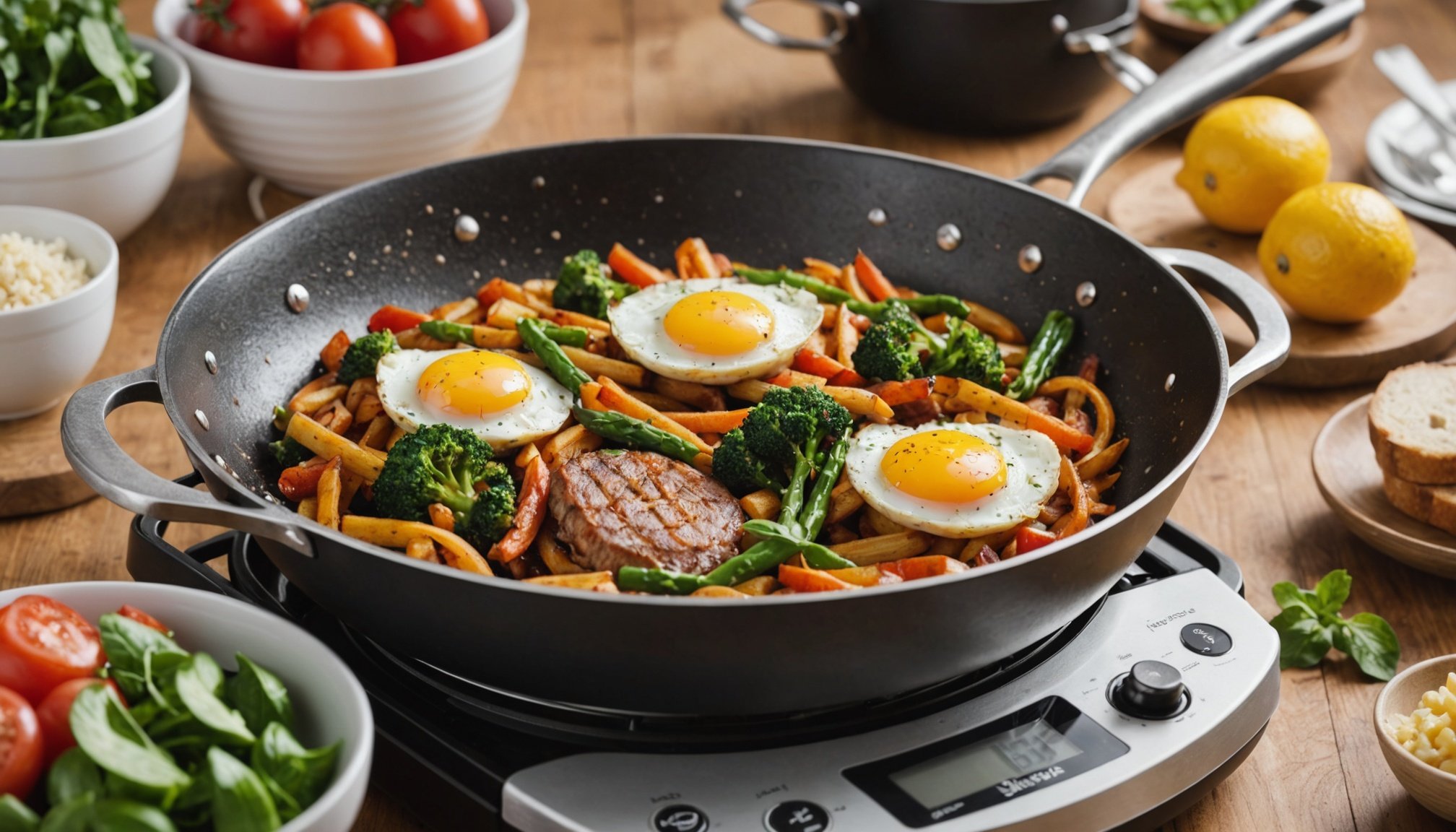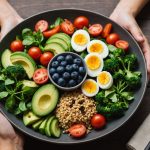Cooking methods can significantly influence the healthiness of your meals. In the UK, where traditional dishes often come laden with fats, it’s crucial to explore low-fat cooking techniques that not only preserve flavor but also contribute to a healthier lifestyle. This article dives into the best low-fat cooking methods that you can easily incorporate into your daily routine. Each method will be discussed in detail, offering insights into their benefits and practical applications in a typical UK kitchen.
Steaming: A Gentle Approach to Cooking
Steaming is one of the simplest yet most effective low-fat cooking methods. This technique involves cooking food using steam heat, which helps retain the nutrients and flavors of the ingredients. As you consider low-fat cooking options, embracing steaming can lead to healthier meals without sacrificing taste.
In parallel : How can I make healthy versions of traditional UK recipes to stay on track?
When you steam vegetables, for instance, they retain more vitamins compared to boiling, which can leach nutrients into the water. Steaming is particularly effective for seasonal British vegetables like carrots, broccoli, and asparagus. You can use a steamer basket or even a microwave-safe dish to prepare your meals quickly.
Fish, such as cod or haddock, can also be steamed to create flavorful and moist dishes. When preparing fish, consider adding herbs and lemon juice to infuse additional flavor without adding fats. Steaming is not just for vegetables and fish; you can also steam chicken breasts, ensuring they remain juicy while keeping the calorie count low.
In parallel : How does mindful eating contribute to achieving and maintaining slimness?
In the UK, you can find various steaming appliances, from electric steamers to multi-cookers that include a steaming function. Investing in one of these can enhance your cooking repertoire, allowing you to prepare healthy meals effortlessly. Additionally, steaming is a versatile method that can be combined with other techniques, such as stir-frying, to create delicious and low-fat stir-fry dishes.
Grilling: Bringing Out Natural Flavor
Grilling is another excellent low-fat cooking method that can elevate your dishes. This method uses direct heat, either from gas or charcoal, allowing excess fat to drip away from the food. As you grill meats, vegetables, or even fruits, you enhance their natural flavors while reducing their fat content.
In the UK, summer barbecues are a cherished tradition. While grilling outdoor meats like chicken or sausages, opt for lean cuts to maximize health benefits. Avoid fatty marinades; instead, use spices, herbs, and citrus juices to season your food. This not only adds flavor but also keeps your dishes light and healthy.
Vegetables are also a fantastic option for grilling. Zucchini, bell peppers, and mushrooms can be tossed in a bit of olive oil and grilled to perfection, creating a smoky flavor that is hard to resist. For an added twist, consider grilling fruits such as peaches or pineapples, which caramelize beautifully and make for a delightful dessert or side dish.
Moreover, grilling can be done indoors with a grill pan or an electric grill, making it a versatile choice throughout the year. Incorporating grilling into your cooking routine can help you enjoy meals that are both satisfying and low in fat.
Baking: Healthy and Delicious Dishes
Baking is often associated with indulgent desserts, but it can also be a fantastic low-fat cooking method for savory dishes. By using the oven’s dry heat, you can prepare meals that are both tasty and healthier than their fried counterparts. Baking allows you to cook without added oils or fats, making it a suitable choice for many recipes.
In the UK, you can bake a variety of dishes, from chicken and fish to vegetables and casseroles. Consider baking root vegetables such as potatoes, carrots, and beets; these can be seasoned with herbs and spices and roasted until tender and flavorful. Instead of frying battered fish, try baking it with a crunchy breadcrumb coating for a healthy twist on classic fish and chips.
Furthermore, when baking meats like chicken breasts, you can maintain moisture by wrapping them in foil or adding a splash of broth. This method ensures your meat remains juicy without the need for additional fats.
Baking is also an excellent way to prepare healthy snacks. Instead of deep-frying snacks, you can bake homemade vegetable chips or opt for baked falafel. These options provide the crunch and satisfaction you crave without the excess fat. By incorporating baking into your cooking methods, you can prepare a range of healthy meals that are both nutritious and delicious.
Sautéing: Quick and Flavorful Meals
Sautéing is a quick cooking method that uses minimal fat, making it an ideal low-fat option. This technique involves cooking food in a small amount of oil or fat over high heat, allowing ingredients to cook quickly while preserving their texture and flavor. When done correctly, sautéing can lead to mouthwatering meals that don’t rely on heavy sauces or excessive fats.
In a typical UK kitchen, you can sauté a variety of ingredients, including meats, seafood, and vegetables. When sautéing meats like chicken or turkey, opt for lean cuts and use just a teaspoon of oil. Enhance the dish with garlic, onions, and fresh herbs, which can add depth of flavor without increasing the calorie count.
For vegetables, sautéing is an excellent way to bring out their natural sweetness. Seasonal vegetables such as spinach, bell peppers, and mushrooms can be quickly sautéed for a vibrant and nutritious side dish. You can also create a base for soups or stews by sautéing aromatic vegetables before adding liquids, intensifying the overall flavor of your meal.
One of the best aspects of sautéing is its speed; meals can be prepared in a matter of minutes. This makes it a great option for busy weeknights when you want to whip up something healthy without spending hours in the kitchen. Remember to use non-stick pans or well-seasoned cast iron to minimize the amount of fat needed for cooking.
Poaching: Cooking with Precision and Care
Poaching is a gentle cooking method that involves simmering food in liquid, typically water or broth. This technique is particularly suitable for delicate proteins like fish or eggs. Poaching helps retain moisture and flavor while keeping the fat content low, making it an excellent choice for health-conscious cooks.
In the UK, poaching is often used for preparing fish such as salmon or trout. By simmering fish in seasoned water or broth, you can achieve tender, flaky results without the need for added fats. Consider adding aromatics like lemon, dill, or bay leaves to the poaching liquid to infuse the fish with flavor.
Eggs are also a staple in many UK breakfasts, and poaching is a low-fat way to prepare them. Poached eggs can be served over whole-grain toast or sautéed greens, creating a nutritious and satisfying meal. The creamy texture of poached eggs makes them a versatile ingredient for salads or as a topping for various dishes.
Moreover, poaching can be an effective method for preparing fruits, such as pears or apples, in a light syrup. This provides a naturally sweet dessert option without the need for heavy creams or added sugars. Poaching allows you to create dishes that are both elegant and healthy, fitting seamlessly into your low-fat cooking repertoire.
In conclusion, adopting low-fat cooking methods can significantly impact your diet and overall health. Techniques such as steaming, grilling, baking, sautéing, and poaching allow you to prepare flavorful meals without relying on excessive fats. As you explore these methods in your UK kitchen, you’ll discover that healthy cooking can be both satisfying and enjoyable. By incorporating these techniques into your daily routine, you can create delicious dishes that align with a healthier lifestyle.











